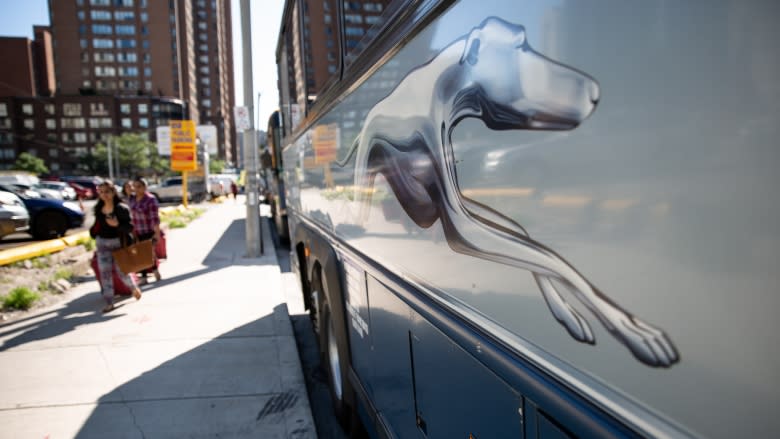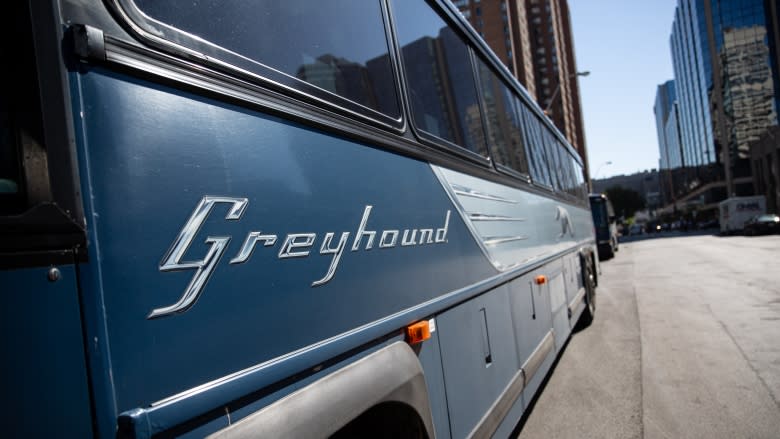Void left by Greyhound unlikely to be filled by smaller bus companies
While Canadian bus companies have said they could fill some of the transportation gaps that will be left when Greyhound ends its service in Western Canada, it will not be enough to meet the needs of commuters who had relied on the national carrier.
Instead, say industry experts, a combination of increased online ridesharing programs, new alternative models, and government assistance and subsidies must also be part of the solution.
"Will it happen without some public policy changes? No. That's the simple story. The magic of the market will not solve this problem," said Anthony Perl, a professor of urban studies at Simon Fraser University.
Last week, Greyhound announced that a "challenging transportation environment" meant they could no longer operate unsustainable routes in most of Western Canada and parts of northern Ontario, leaving some commuters scrambling to seek transit alternatives.
According to the company's figures, ridership has dropped about 40 per cent across the country over the past years, from six million in 2010 to about 3.5 million this current year.
This, they said, can be attributed to increased car travel and ownership, competition among low-cost airlines and regulatory constraints. Their announcement meant that approximately 400 locations across Canada would lose service including:
- 114 locations across Manitoba.
- 107 places across Alberta.
- 57 locations across Saskatchewan.
- 77 places across British Columbia.
However, shortly after their announcement, other smaller regional bus carriers said they could step in to fill this void.
"Hopefully companies such as ourselves can fill the gaps in some areas in British Columbia, and then some other companies along the way will help keep the connectivity right across the country," said John Wilson, president and CEO of Wilson's Transportation Ltd., a B.C.-based charter bus company.
"What operators like us would look at it is the low-hanging fruit, the sustainable routes to start with," he said.
LP Maurice, co-founder and CEO at Busbud, a company that helps online users book bus tickets between cities, said he believes more players with smaller buses, like shuttles, could enter the market.
"Instead of having one big player dominating the market, I think that could create a pretty healthy dynamic for customers and lower prices over time," he said.
But Perl suggested that making a go on some of the these routes could be a challenge.
"If [Greyhound] can't do it I'm not sure why anyone thinks that someone else would have a better way to do it," Perl said. "It's not like Greyhound's badly run or anything."
Rural areas in Western Canada should look abroad for other models that have proven successful, he said.
One example is Switzerland's busing system, which guarantees any community with 40 people or more access to public transportation. PostBus includes a mix of public and private transit and offers services like PubliCar, a dial-a-ride services for routes in sparsely populated areas.
Another option, he said, is similar to how Israel runs its busing system — a non-profit co-operative model in which local drivers own a stake in the company.
"It's not about making money anymore, it's about sort of generating enough value to more or less cover your costs of doing it."
Drivers in smaller communities could work part time, lowering costs, while the government could offer financial assistance to fund smaller vehicles.
"These are models that have worked in other countries although none as big as Canada," Perl said.
Wilson agreed the government would have to step up to help subsidize the "unsustainable" routes.
Greyhound has been using the same business model of the 1950s, said Barry Prentice, a professor of supply chain management at the University of Manitoba. People go to the station, buy a ticket and get on the bus, not particularly convenient in some rural Western Canadian areas.
For longer trips, people have abandoned buses and turned to air travel, a faster and often just slightly more expensive alternative. The demand is no longer there for big coaches, Prentice said. Smaller buses of 20 or fewer passengers are the future.
So too is the internet and other ride-sharing systems which identify where the passengers are and get enough together to make a trip.
"Instead of having a scheduled service you maybe have something I'd call a reserve service, where you know in two days' time I want to go to a doctor's appointment in Winnipeg," Prentice said.
"I put my number in for that time and I get a confirmation back. I think that's probably more likely the future of transportation in the rural areas."



